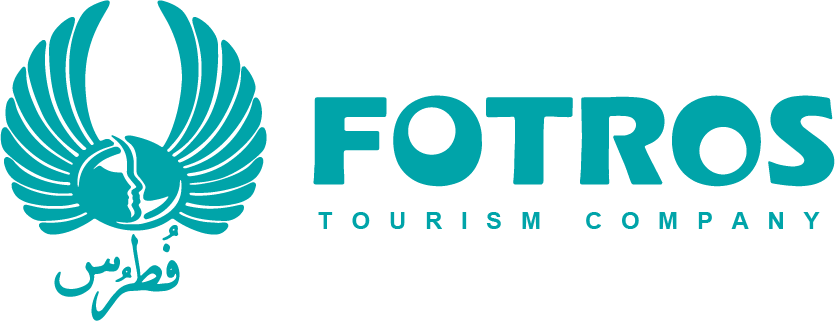
Medical Surgeries
Myomectomy


Myomectomy is a surgical procedure performed to remove uterine fibroids, which are noncancerous growths or tumors that develop within the muscular wall of the uterus. Also known as fibroidectomy, this procedure is typically recommended for women who experience symptoms or complications related to their fibroids, such as heavy menstrual bleeding, pelvic pain, pressure on the bladder or rectum, or fertility issues. Myomectomy aims to alleviate these symptoms and preserve the woman's uterus, making it an option for those who wish to have children in the future.
There are several methods of performing myomectomy, including:
Abdominal Myomectomy: This is the most common approach, where a surgeon makes an incision in the abdominal wall to access the uterus and remove the fibroids. This method is typically used for larger or multiple fibroids.
Laparoscopic Myomectomy: Also known as minimally invasive or "keyhole" surgery, this method involves making several small incisions in the abdomen and using specialized instruments and a camera to perform the surgery. Laparoscopic myomectomy often results in shorter recovery times and less scarring compared to the abdominal approach.
Hysteroscopic Myomectomy: In this procedure, fibroids that are primarily within the uterine cavity are removed through the cervix using a hysteroscope, a thin, lighted tube with a camera. This approach is suitable for small, submucosal fibroids that do not protrude into the uterine wall.


The choice of the myomectomy method depends on the size, number, and location of the fibroids, as well as the patient's circumstances and the surgeon's expertise.
is a surgical procedure performed to remove uterine fibroids, which are noncancerous growths or tumors that develop within the muscular wall of the uterus. Also known as fibroidectomy, this procedure is typically recommended for women who experience symptoms or complications related to their fibroids, such as heavy menstrual bleeding, pelvic pain, pressure on the bladder or rectum, or fertility issues. Myomectomy aims to alleviate these symptoms and preserve the woman's uterus, making it an option for those who wish to have children in the future.


several reasons why a myomectomy recommended:
Symptomatic fibroids: Myomectomy is often performed when uterine fibroids cause significant symptoms, such as heavy menstrual bleeding, pelvic pain, and pressure on the bladder or rectum. These symptoms can negatively impact a woman's quality of life.
Pain relief: Fibroids can cause chronic pelvic pain and discomfort. Myomectomy can alleviate this pain by removing the fibroids that are causing it.
Fertility preservation: Some women with fibroids who wish to become pregnant or maintain their fertility may undergo a myomectomy. Removing fibroids that are affecting the uterine cavity can improve the chances of successful pregnancy and reduce the risk of miscarriage.
Urinary or bowel issues: Large fibroids can put pressure on the bladder or rectum, leading to urinary frequency, urgency, constipation, or other discomfort. Myomectomy can help relieve these symptoms by reducing the size of the fibroids.
Infertility or recurrent pregnancy loss: If fibroids are located inside the uterine cavity (submucosal fibroids), they can interfere with implantation or cause recurrent miscarriages. Myomectomy can improve fertility outcomes in such cases.
Heavy menstrual bleeding: Fibroids can lead to abnormally heavy menstrual bleeding (menorrhagia), which may lead to anemia and interfere with daily activities. Removing the fibroids can reduce menstrual bleeding and improve overall health.
Unsuccessful medical management: If conservative treatments, such as medication or hormonal therapies, do not effectively control fibroid-related symptoms, myomectomy may be recommended.
Before the Myomectomy Surgery:
Consultation and Pre-operative Preparation:
• Meet with your healthcare provider to discuss the procedure, risks, benefits, and alternatives.
• Follow any specific pre-operative instructions provided by your surgeon, such as fasting or discontinuing certain medications.
Pre-operative Health:
• Maintain a healthy diet and exercise routine.
• Ensure you are well-hydrated.
Arrange for Support:
• Plan for someone to accompany you to the surgery and assist you afterward.




After the Surgery:
Recovery in the Hospital:
• Myomectomies can be performed through various techniques (laparoscopic, abdominal, hysteroscopic), and your recovery may vary accordingly.
• You may stay in the hospital for a few hours to a few days, depending on the type of myomectomy and your overall health.
Pain Management:
• You will likely experience some pain and discomfort. Your surgeon will prescribe pain medication to manage this.
Physical Activity:
• Rest is crucial in the first few days. Avoid heavy lifting, strenuous exercise, and sexual activity as recommended by your surgeon.
Wound Care:
• Keep your incisions clean and dry, following your surgeon's instructions.
Diet:
• Start with clear liquids and gradually transition to a regular diet based on your surgeon's advice.
Medications:
• Take any prescribed medications as directed, including pain relief and antibiotics, to prevent infection
Follow-Up Appointments:
• Attend all post-surgery follow-up appointments with your healthcare provider.
Resuming Normal Activities:
• The time it takes to return to your regular activities will vary based on the type of myomectomy and your recovery. Your surgeon will guide you on this.
Managing Postoperative Complications:
• Be aware of signs of infection, excessive bleeding, or other complications, and contact your healthcare provider if you experience any concerning symptoms.
Emotional Support:
• Surgery can be emotionally taxing. Don't hesitate to seek emotional support from friends, family, or a therapist if needed.
Why Iran:
Iran can be a suitable destination for myomectomy for several reasons:
Skilled Surgeons: Iran has a well-established healthcare system with skilled and experienced surgeons who can perform myomectomies with a high degree of expertise. Many Iranian doctors have received training and education in reputable medical institutions around the world.
Modern Medical Facilities: Iran has modern hospitals and medical facilities equipped with the latest technology and medical equipment to perform myomectomies and provide comprehensive pre-and post-operative care.
Cost-Effective Treatment: Medical procedures in Iran are often more affordable compared to many Western countries, making it an attractive option for individuals seeking cost-effective healthcare. The lower cost does not compromise the quality of medical care


Medical Tourism: Iran has become a popular destination for medical tourism, and many hospitals and clinics cater to international patients. They often provide services such as assistance with travel, accommodation, and language support.
Multilingual Healthcare Professionals: Many healthcare professionals in Iran are fluent in English or other languages commonly spoken by international patients, ensuring effective communication during your treatment.
High Success Rates: Iranian surgeons have a track record of successful myomectomy procedures, and the country's medical community continues to advance in the field of gynecological surgery.
Cultural and Historical Attractions: Beyond the medical benefits, Iran offers a rich cultural experience with its historical sites and vibrant culture. Patients may choose to combine their medical treatment with exploring the country's heritage and attractions.


Our services include:
![]() our online services include: quotes and consultation
our online services include: quotes and consultation
![]() Planning the highest word-level medical trips and quality hospitals and medical centers according to the patient's request and budget.
Planning the highest word-level medical trips and quality hospitals and medical centers according to the patient's request and budget.
![]() Appointing treatments by the most skilled and experienced doctors.
Appointing treatments by the most skilled and experienced doctors.
![]() Airport pick-up/drop off, check-ups, accompanying translator, book hotel (for patients and their families)
Airport pick-up/drop off, check-ups, accompanying translator, book hotel (for patients and their families)
![]() Pre-hospitalization / post-hospitalization care services
Pre-hospitalization / post-hospitalization care services
All-Inclusive Medical Travel Packages
based on your budget, our team will assist you in choosing the best hotels, doctors, and medical centers. Our packages include:
 Airport Pickup Services
Airport Pickup Services Airport Dropoff services
Airport Dropoff services Hotel
Hotel Ticket
Ticket visa
visa translator
translator Transfer
Transfer SIM Card
SIM Card Sightseeing
Sightseeing


 why Iran
why Iran
Patients may choose to have abdominoplasty (commonly known as a tummy tuck) in Iran for a variety of reasons
Cost, Quality of Care, Privacy and Discretion, Combined Tourism, no Waiting Times
![]()
Fotros is an Iranian health tourism company with a professional team consisting of a support team and word-level doctors in medical and cosmetic surgeries like Neurosurgery, Rhinoplasty, Breast cosmetic surgeries, Liposuction, tummy tuck, etc.










 why Iran
why Iran